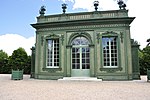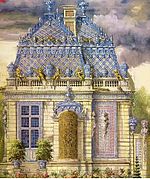Moberly–Jourdain incident

The Moberly–Jourdain incident (also the Ghosts of Petit Trianon or Versailles, French: les fantômes du Trianon / les fantômes de Versailles) is a claim of time travel and hauntings made by Charlotte Anne Moberly (1846–1937) and Eleanor Jourdain (1863–1924). In 1911, Moberly and Jourdain published a book entitled An Adventure under the names of "Elizabeth Morison" and "Frances Lamont". Their book describes a visit they made to the Petit Trianon, a small château in the grounds of the Palace of Versailles, where they claimed to have seen the gardens as they had been in the late eighteenth century, as well as ghosts, including Marie Antoinette and others. Their story caused a sensation and was subject to much ridicule.
Excerpt from the Wikipedia article Moberly–Jourdain incident (License: CC BY-SA 3.0, Authors, Images).Moberly–Jourdain incident
Cour du Petit Trianon, Versailles
Geographical coordinates (GPS) Address Nearby Places Show on map
Geographical coordinates (GPS)
| Latitude | Longitude |
|---|---|
| N 48.8158 ° | E 2.1097 ° |
Address
Le Petit Trianon (Château du Petit Trianon)
Cour du Petit Trianon
78000 Versailles, Notre-Dame
Ile-de-France, France
Open on Google Maps











